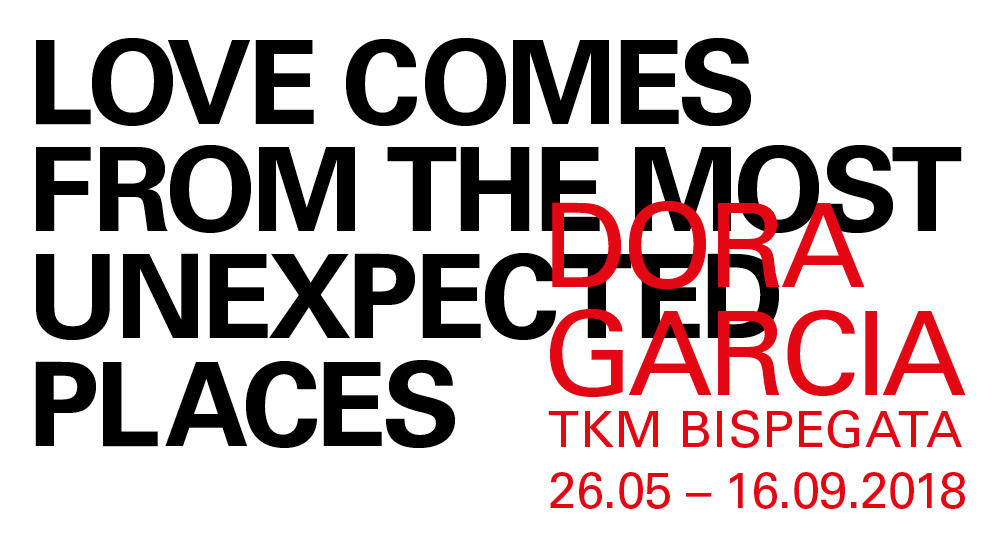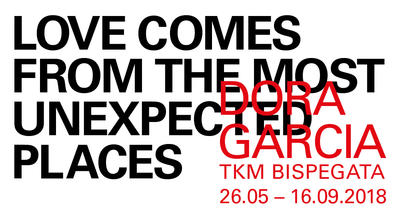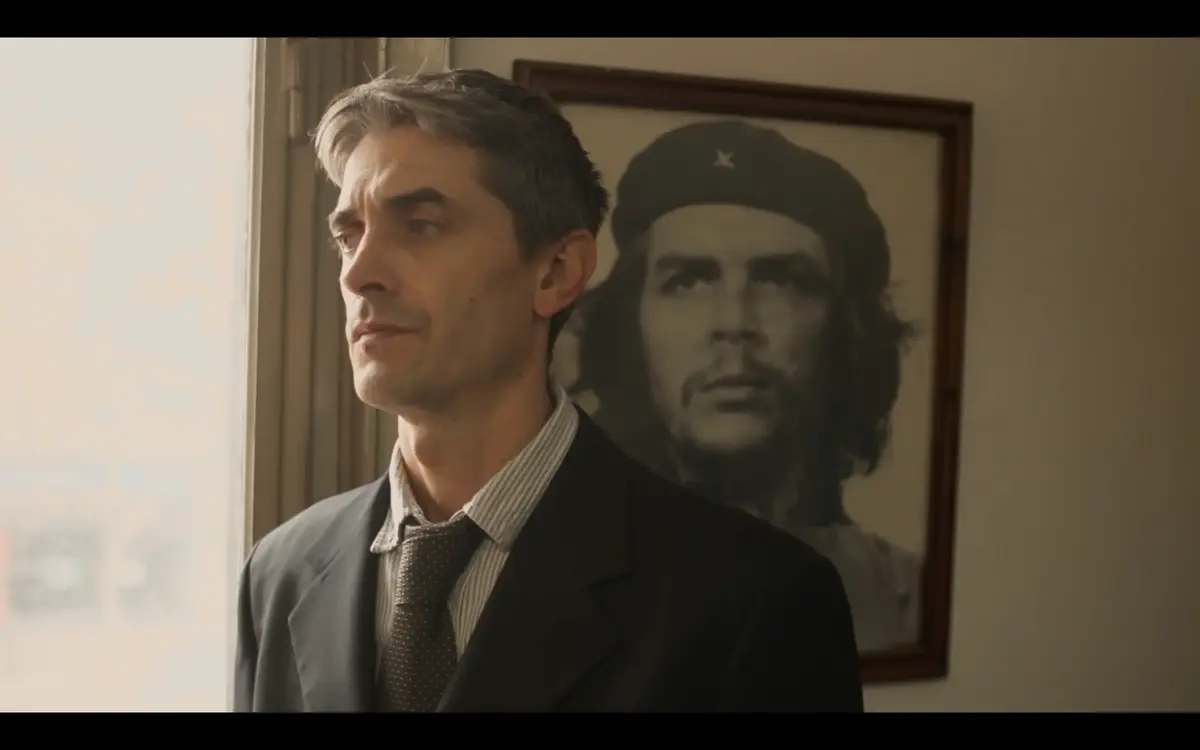Can art be compared to love?
“Love is to give something you do not have ... to someone who does not want it," said the French philosopher Jacques Lacan.
If that is the case, can we then see similarities between artistic practice and love? An artist wants to give something she does not have to someone, the audience. They have not asked for it, and they do not necessarily know they need it. Yet, as with love, there is something given and something received, and this can lead to happiness.
The renowned Spanish artist Dora García invites the audience to see this new exhibition at Trondheim kunstmuseum, with all its different parts, from film to performance, as part of such a loving process.
Love can take many forms. It can be a longing for unity or for something greater than oneself, as represented in Thresholds, a guide to the various religious and spiritual communities in Trondheim. Or the commitment we find in the film The Joycean Society, where Finnigans Wake, referred to as the world's most inaccessible book, is read and interpreted by a devoted group of amateurs.
The search for love can also be manipulated. In the performance The Romeos, four young men have been commissioned to be especially charming, respectful and friendly to citizens and tourists in Trondheim and at the museum throughout the exhibition period. The work is based on a spy strategy used by the DDR during the Cold War, where young men used their charm to get close to women who could provide them with secrets or information.
LOVE COMES FROM THE MOST UNEXPECTED PLACES displays works that can be seen as leading up to García's latest film Segunda Vez (Second Time). The film centres around art theorist and psychoanalyst Oscar Masotta (1930-1979). Masotta was in the first ranks of the Argentinian avant-garde in the early 1960’s and also seminal in introducing Lacanian psychoanalysis in the Spanish-speaking world. Yet by a number of personal, geographical and political accidents he has been a marginal figure until now. Trondheim kunstmuseum has contributed to the production of the feature length film Segunda Vez.
Over the last ten years Dora García has had a significant role on the international art scene. In 2011 her performance work was shown in the Spanish Pavilion of the Venice Biennale, and at (d)OCUMENTA 13 in Kassel. She currently has a large solo exhibition at Museo Reina Sofia in Madrid. Dora García lives and works in Barcelona.



